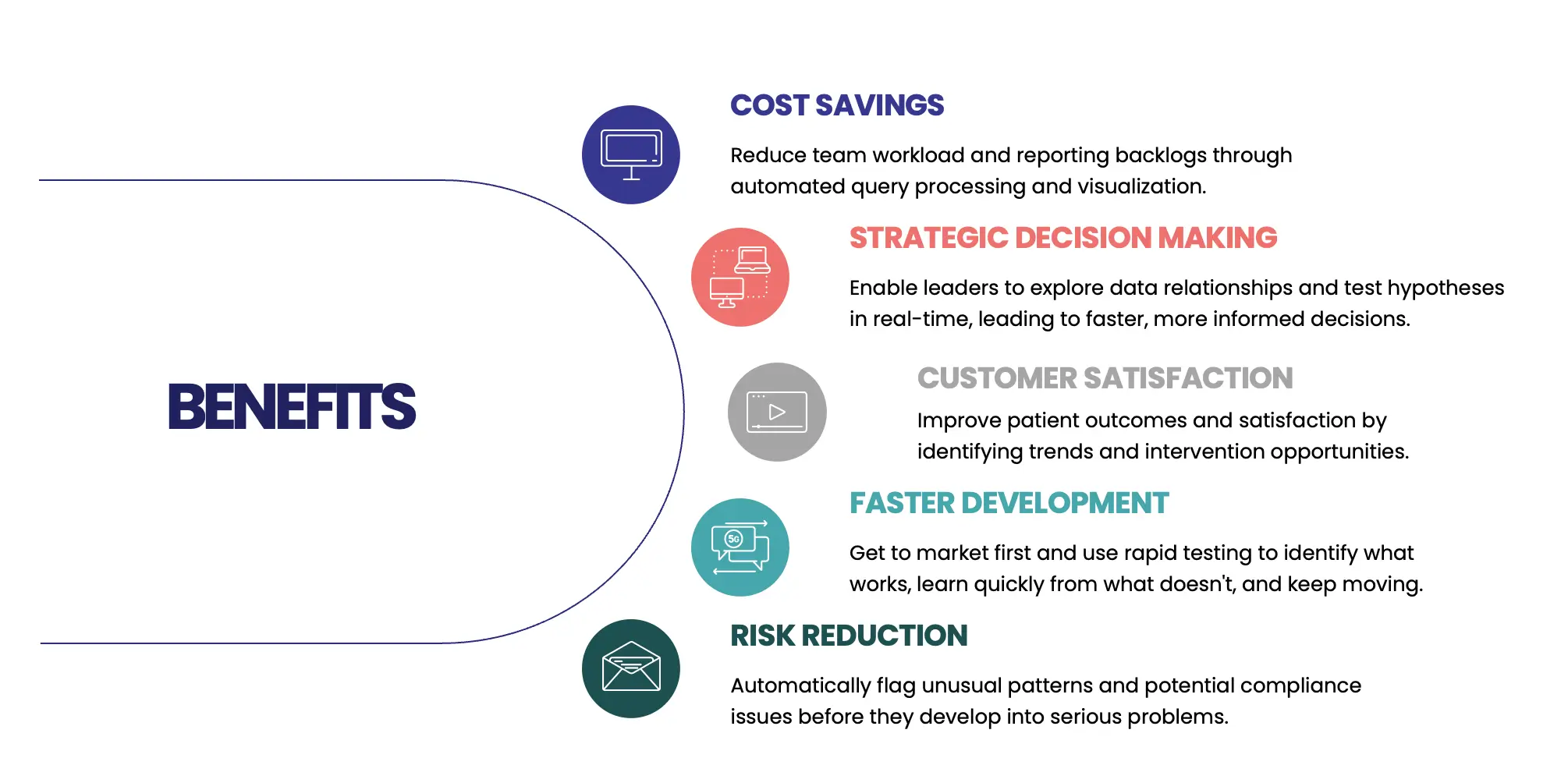
An analyst team of 4-5 FTEs spends significant time on ad-hoc requests that are just beyond the limits of self-service tools
Healthcare leaders often face significant delays accessing critical data due to reporting team backlogs.
Impress your customers with true data and analytics democratization
“I just need to know how our diabetic patients are responding to our outreach program,” the department head explained to the analytics team. “We’ll add it to the queue,” they responded, “but we’re backed up for at least three weeks.”
Three weeks was too long — decisions about the program needed to happen now. This kind of bottleneck between healthcare leaders and their data creates real problems. Business and clinical heads need timely insights, but technical teams are overwhelmed with reporting requests.
The result is delayed decisions, missed opportunities, and frustrated leaders who can’t access insights into their operations (not to mention a hefty price tag for analytics teams and software platforms).
In healthcare and human services, automatic reporting (powered by AI) offers a compelling solution to data access challenges. AI-based reporting enables non-technical users to answer specific questions as they arise, without relying on pre-built reports or technical teams.
With this approach, business users can create on-demand, customized reports that address their immediate needs. Instead of waiting weeks for IT to build a dashboard, leaders can explore data directly, getting answers in minutes.
Healthcare organizations implementing AI-driven business intelligence creates value across five critical areas:

Here are some examples of how different healthcare stakeholders could benefit:
Unlike traditional reporting solutions, AI-driven analytics tools enable healthcare leaders to ask questions in plain language. A department head can simply type things like, “Show me readmission rates for cardiac patients over the last six months compared to last year,” and receive visualized results without writing a single line of code.
Public health officials can query, “What’s the current vaccination rate across counties with demographic breakdowns by race and ethnicity?” The system provides interactive maps and charts with Race, Ethnicity and Language (REaL) data, eliminating weeks of report preparation and enabling faster public health interventions.
Care managers can ask, “Which high-risk patients haven’t had a follow-up appointment in the last 90 days?” AI analytics immediately identifies care gaps across multiple settings, so staff can prioritize outreach efforts and improve coordination.
Analysts can prompt, “Show me emerging trends in ER utilization among members with chronic conditions this quarter.” The system instantly highlights patterns and provides dynamic risk stratification updates, enabling timely interventions before costs escalate.
Successful AI-driven business intelligence requires thoughtful preparation in several key areas:
Will AI analytics replace traditional reporting? No. Both still have important roles to play in your data strategy.
Implementing AI business intelligence comes with certain costs. You’ll need to invest in data interoperability, security controls, and quality assurance to ensure users receive accurate information. However, these expenses should be weighed against the significant benefits of faster, better decision-making based on data.
To get AI-driven business intelligence right for your organization, you’ll need to focus on these key areas:
When these pieces are in place, your organization can put valuable insights directly in the hands of those who need them most.
Contact Keywell today to learn how our expertise can help your organization implement secure, reliable AI-driven analytics so you can move faster and improve customer satisfaction in your organization.